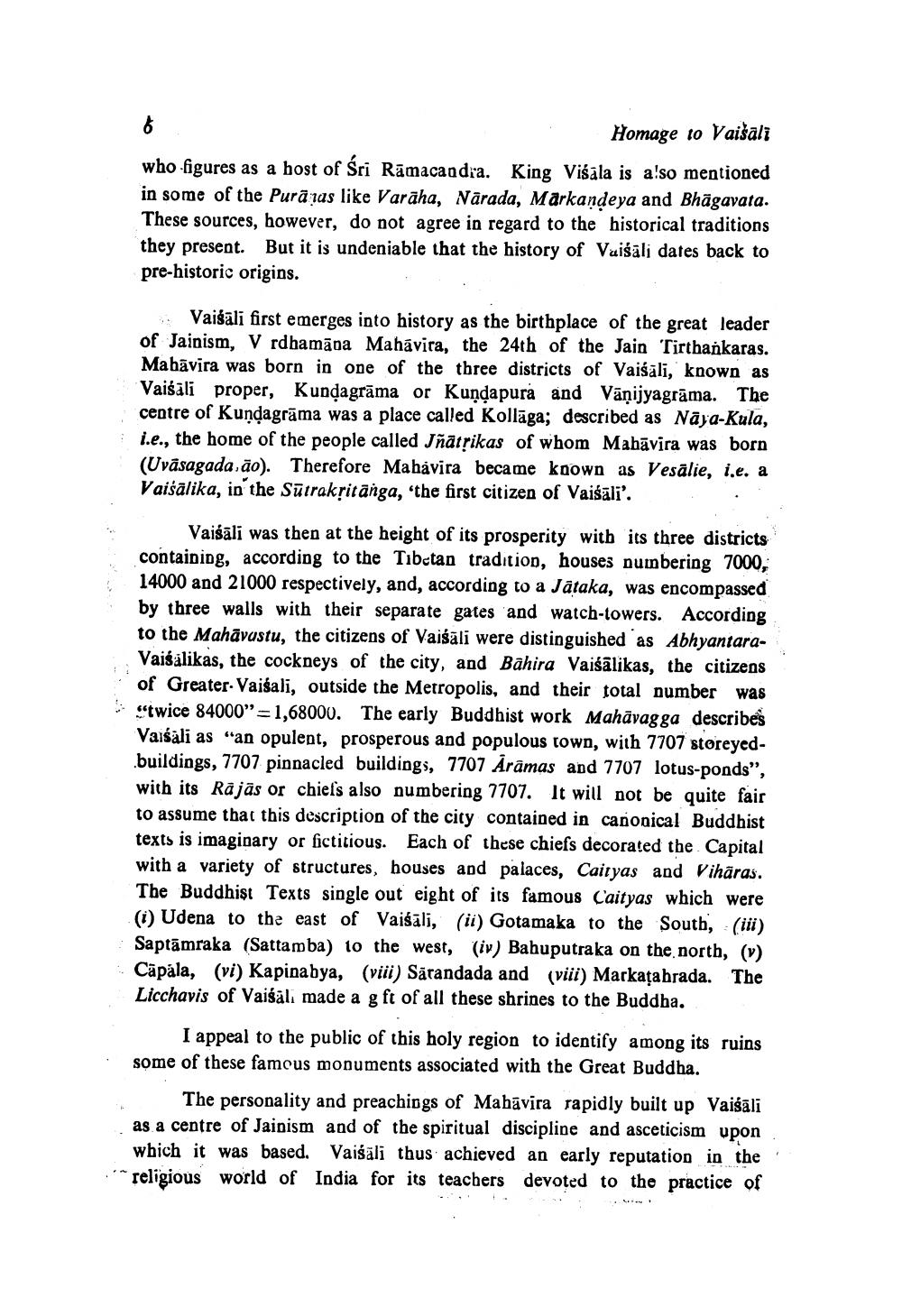________________ 6 Homage to Vaisali who figures as a host of Sri Ramacaodra. King Visala is also mentioned in some of the Purajas like Varaha, Narada, Markandeya and Bhagavata. These sources, however, do not agree in regard to the historical traditions they present. But it is undeniable that the history of Vaisali dates back to pre-historic origins. Vaisali first emerges into history as the birthplace of the great leader of Jainism, V rdhamana Mahavira, the 24th of the Jain Tirthankaras. Mabavira was born in one of the three districts of Vaisali, known as Vaisali proper, Kundagrama or Kundapura and Vanijyagrama. The centre of Kundagrama was a place called Kollaga; described as Naja-Kula, i.e., the home of the people called Jnatrikas of whom Mahavira was born (Uvasagada,ao). Therefore Mahavira became known as Vesalie, i.e. a Vaisalika, in the Sutraksitanga, 'the first citizen of Vaisali'. Vaisali was then at the height of its prosperity with its three districts containing, according to the Tibetan tradition, houses numbering 7000, 14000 and 21000 respectively, and, according to a Jataka, was encompassed by three walls with their separate gates and watch-towers. According to the Mahavastu, the citizens of Vaisali were distinguished as AbhyantaraVaisalikas, the cockneys of the city, and Bahira Vaisalikas, the citizens of Greater. Vaisali, outside the Metropolis, and their total number was "twice 84000"=1,68000. The early Buddhist work Mahavagga describes Vaisali as "an opulent, prosperous and populous town, with 7707 storeyed.buildings, 7707 pinnacled buildings, 7707 Aramas and 7707 lotus-ponds", with its Rajas or chiefs also numbering 7707. It will not be quite fair to assume that this description of the city contained in canonical Buddhist texts is imaginary or fictitious. Each of these chiefs decorated the Capital with a variety of structures, houses and palaces, Caityas and Viharas. The Buddhist Texts single out eight of its famous Caityas which were (i) Udena to the east of Vaisali, (ii) Gotamaka to the South, (iii) Saptamraka (Sattamba) to the west, (iv) Bahuputraka on the north, (v) Capala, (vi) Kapinabya, (viii) Sarandada and (viii) Markatabrada. The Licchavis of Vaisali made a gft of all these shrines to the Buddha. I appeal to the public of this holy region to identify among its ruins some of these famous monuments associated with the Great Buddha. The personality and preachings of Mahavira rapidly built up Vaisali as a centre of Jainism and of the spiritual discipline and asceticism upon which it was based Vaisali thus achieved an early reputation in the .*religious world of India for its teachers devoted to the practice of




